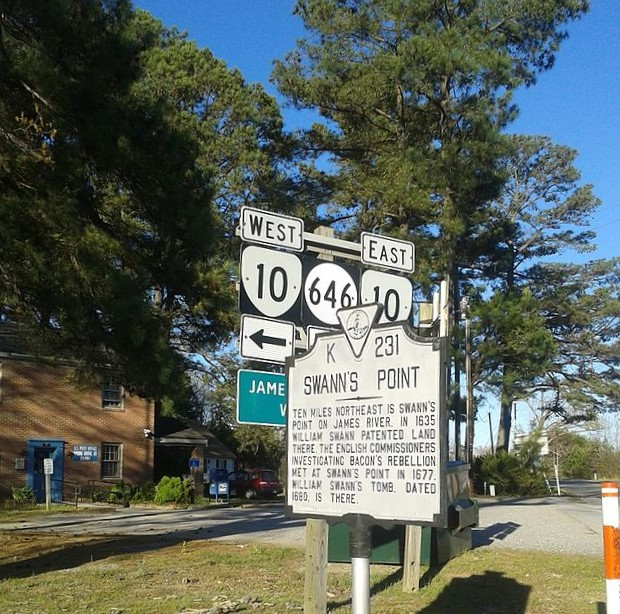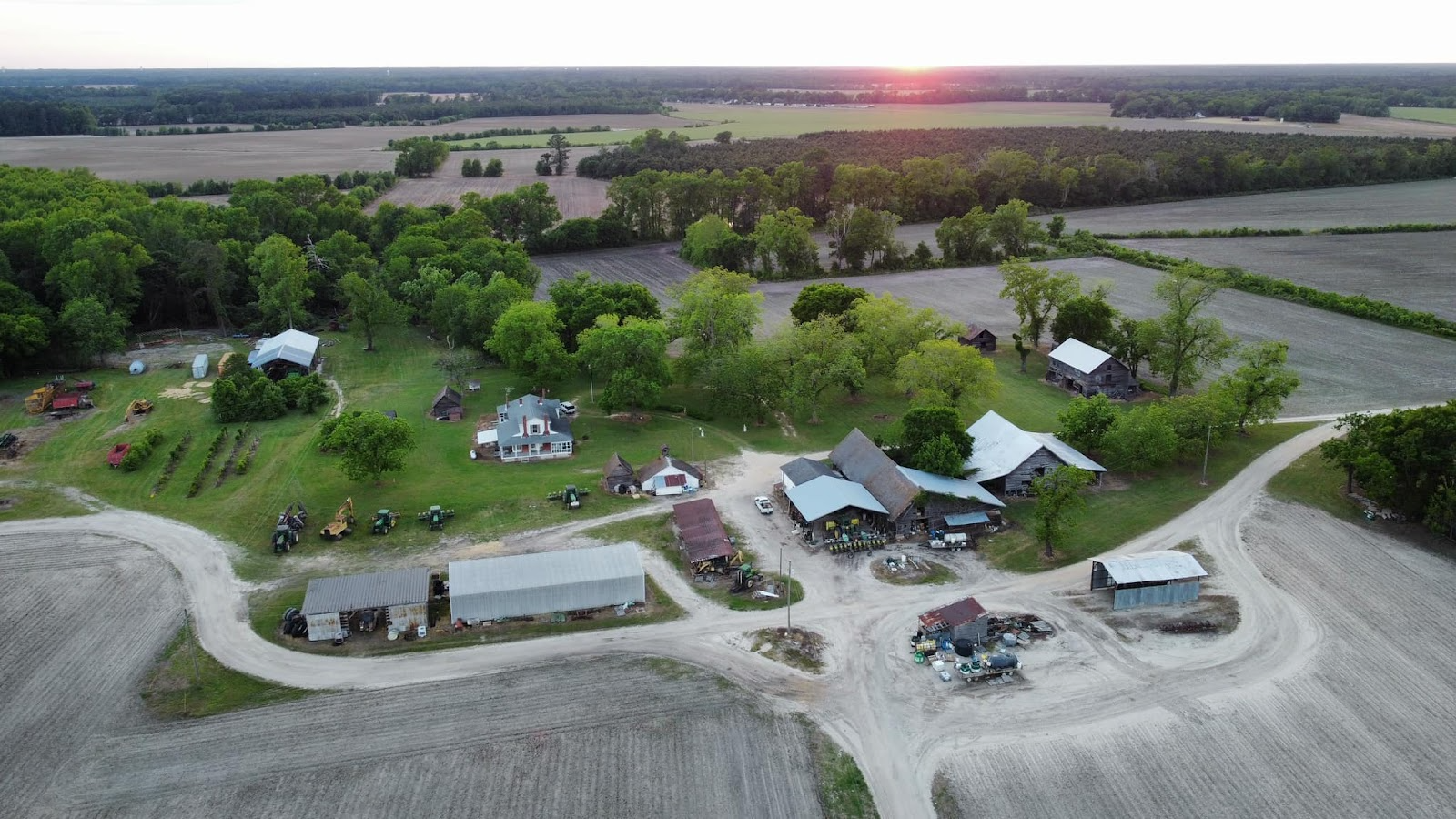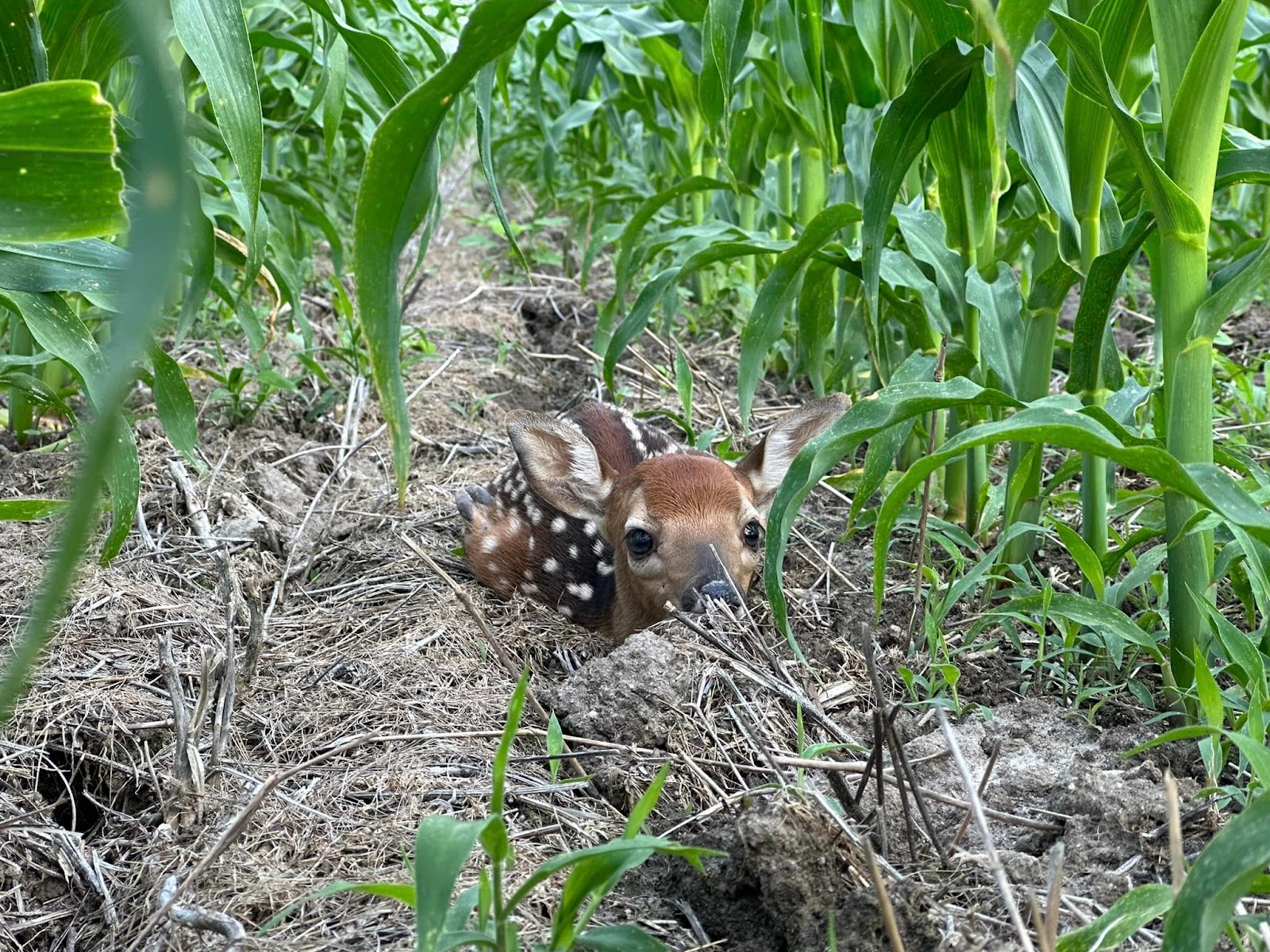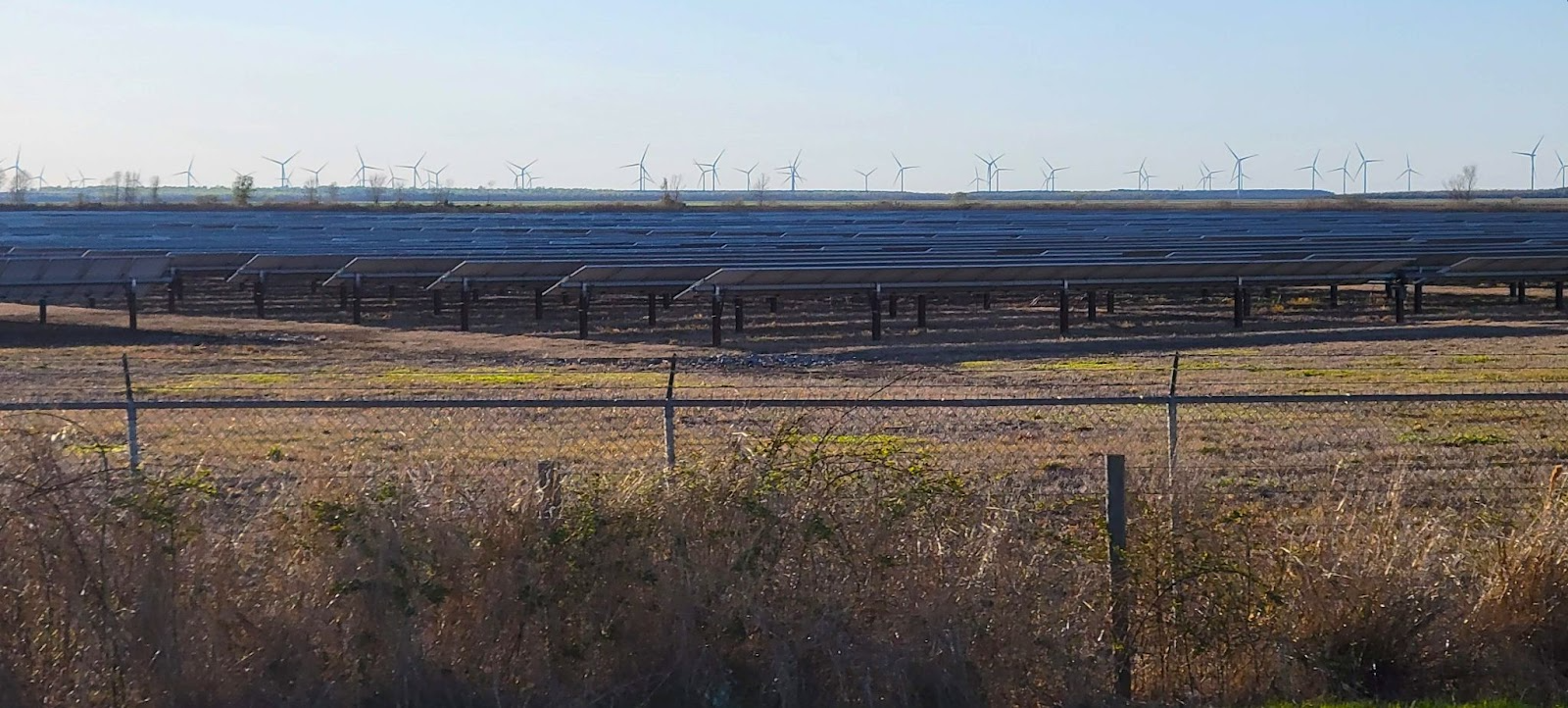As a teenager, I spent chilly autumn days following my dad through the woods, struggling in my too-big boots to keep up with his confident footsteps. I grew up hunting in Surry County, Virginia, chasing squirrels and later whitetail deer and turkeys with my father on land owned by Continental Can Company. In the 1980s, the company used the land for silviculture, and it only cost a few dollars to gain hunting access to thousands of acres of their privately owned woodlands.
For me, that land holds deep nostalgia. I have core memories of cold turkey sandwiches shared on the tailgate of our old Dodge D-50 pickup truck, of shooting my first little buck in a patch of cutovers, of the hearty slap my father delivered to my shoulder just before he told me he was proud of me. Those early experiences in the woods of Surry County are key reasons I became a staunch conservationist.
My dad died in 2017, so I jumped at the opportunity when my uncle—his brother—invited me to hunt with him during the 2022 muzzleloader season.
Although it had been over a decade since my hunting boots touched Surry County soil, it felt like going home. So many of my core memories have that county's soggy river bottoms, lush farmlands, and thick hardwood forests as their backdrop.

Rural Surry County, Virginia is a place rich with history. Photo provided by Alice Jones Webb
After a chilly morning hunt and a warm lunch at Anna’s Pizza, my uncle took me cruising around the winding county backroads, the same ones my father and I used to speed along in that old, rusty Dodge. I was surprised how deeply two-lane blacktops like Holy Bush Road, Route 10, and Swann’s Point were still etched in my memory.
Unfortunately, the scenery along those backwoods byways had changed quite a bit from the verdant woods I remembered.
Changing rural landscapes
In May 2021, Surry County’s Board of Supervisors approved the construction of a 240-megawatt solar farm that spans 1,750 acres across Virginia’s Surry and Isle of Wight counties. Rows and rows of glass and metal panels now span the land I hunted as a child.
In addition to the extensive solar facilities in Surry County, Virginia is also home to the largest solar project east of the Rocky Mountains. The Spotsylvania Solar Energy Project, just nine miles from the grave of Stonewall Jackson’s arm, encompasses approximately 6,350 acres in Northern Virginia.

A solar facility in rural North Carolina. Photo provided by Alice Jones Webb
Virginia has been a hub of agricultural prominence since the early 1600s. However, according to data from the U.S. Department of Agriculture, the state lost almost 2,000 acres of once-productive farmland per week in 2021. Much of that land is now covered in swaths of metal and glass solar panels.
In 2015, there were no utility-scale solar arrays in the Old Dominion. Then, in 2020, the Virginia General Assembly passed the Virginia Clean Economy Act, which requires the two largest electric utilities in the state to be “carbon-free” by 2050. It takes about 10 acres of land covered in solar panels to generate a single megawatt of power. To meet Virginia’s “carbon-free” energy goals will require approximately 161,000 acres of land. The new law set off a barrage of multimillion-dollar investments in solar installations across the state.
Beyond the Old Dominion State
The modern solar panel sprawl isn’t unique to Virginia. The solar industry is growing at a record pace. In just the past decade, solar energy has experienced an average annual growth rate of 24%, with sunnier states like California, Texas, Florida and Arizona leading the U.S. in solar energy generation.
Nationwide, the U.S. Department of Energy estimates that 5 million acres of land will end up covered with solar panels.
While California has long been the “solar king,” other states are working hard to play catch-up. North Carolina may not be the first state that comes to mind when you think of solar energy. However, the Tar Heel State has seen massive solar energy expansion with an average of 109 clear days per year and acres of flat, cleared cropland ripe for the taking.
According to Advanced Energy, there are approximately 670 solar facilities occupying 31,125 acres in North Carolina.

Once verdant farm fields are now lined with solar panels and surrounded by security fences. Photo provided by Alice Jones Webb
While many solar investors claim utility-scale solar facilities are built on less productive cropland, generational farmland is leased to sizable solar energy corporations with frightening regularity.
Bryan “Tate” Mayo Jr, family farmer and small-town mayor of Tarboro, North Carolina, has watched as acre after acre of his neighbors' farms have gone to solar panels.
“It’s definitely changing the landscape,” Mayo told Kinute. “From the agricultural side, it is scary to see because the best land to use for solar is the land that is already cleared.”
“I really hate them being called ‘solar farms.’” Mayo explained. “They are solar arrays on old farms. There’s nothing related to farming about them. I hate the way the term has been bastardized.”

Aerial view of May Farms. Photo provided by Bryan Tate Mayo Jr.
Mayo, whose family has farmed the same soil in Edgecombe County since at least the 1720s, acknowledges that the push to go solar is strong, especially in economically disadvantaged areas like eastern North Carolina.
The vast majority of new solar facilities are being built in rural communities, where land is usually more plentiful than money, and the locals regularly struggle to pay the bills. It’s no wonder farmers—in efforts to make ends meet—are so willing to sell out the land their great-great-grandfathers poured sweat, blood and prayers into.
“You can make more money with a pen stroke and letting folks do that to your land than you ever could farming and with hardly any risk. So, I understand the economic aspect of it, especially around here in an economically deprived area. You’re almost stupid not to [go solar].
“Emotionally, it’s doggone depressing. If you know that your neighbor is going to make more money off of much less labor and much less risk, and you’re still farming, it leaves you scratching your head. How is it that feeding the country is less financially gratifying than putting up some panels made in China and then getting a check from somebody in the mail?”

The Mayo family has farmed the same soil since before the founding of the country. Photo provided by Bryan Tate Mayo Jr.
As Mayo has watched fertile fields on neighboring farms go from rows of corn, cotton and soybeans to rows of steel and glass, he worries about how farming seems to be heading in the U.S.
“If we export our food production somewhere else and something happens like COVID and the borders shut down, what happens? Will we be a nation without food but with a bunch of these shiny solar panels in the fields that are making somebody feel good about themselves because they’re getting ‘green’ energy?”
To Mayo, the pressure to turn farmland into solar fields is another stressor for people already in a high-stress profession.
“I think farmers have long sat at the bottom of the totem pole of public opinion,” Mayo said. “Everything from what we grow to what we spray, our practices are under serious scrutiny. You can’t turn on the news without hearing something about animal agriculture and how cruel and unjust the process of making and processing things like bacon is, how that’s killing the planet.

A whitetail fawn finds refuge in a Mayo Farms field. Photo provided by Bryan Tate Mayo Jr.
“There’s a reason the suicide rate among farmers is so high. You’re sitting there putting everything you have year in and year out, financially, physically, mentally, into what you’re doing, into the dream that you will have a good crop and prices will be high.
“To me, [solar power] is nothing more than another form of speculation eating up land left and right. It’s just another threat to our way of life, which is already as stressful as can be.”
The dirt on clean energy
While it may give the environmentally conscious warm fuzzy feelings about “clean” energy, solar companies aren’t gobbling up thousands of acres of land as an unselfish civic duty. There is tons of cash to be made in solar power, largely due to “green energy” initiatives. In 2020, the global solar market reached a staggering $422 billion.
Of course, pumping tons of cash into an industry that could help steer the planet away from a potentially catastrophic climate crisis should be worth the investment. Unfortunately, while solar energy systems may produce electricity with practically zero carbon emissions, it doesn’t mean they don’t have an environmental impact.
It is highly feasible that we are trading one form of environmental degradation for another.
Solar installations on the scale needed to supply power grids are massive, transforming pastoral vistas into industrialized landscapes of metal and glass surrounded by security fences. These sprawling arrays can alter everything from sun exposure to surface temperatures, which can have vast and unexpected impacts on plants and animals and even alter the area’s microbiome.
The dark surfaces of solar panels absorb most of the light and heat that reaches them. However, only about 15% of incoming energy is converted to electricity. The rest is returned to the environment as heat. Because the panels are so much darker than the surrounding vegetation, large swathes of solar fields will absorb and emit heat at higher rates, which can have unknown consequences on the surrounding environment.
According to Jeffrey Lovich, a research ecologist with the U.S. Geological Survey, some solar panels “can incinerate insects and burn the feathers of birds that fly through.”
A few burnt insects in rural areas might not seem like a big deal, especially if you’ve ever seen the insect carnage on a windshield after a drive down twisting backroads. However, the scale of solar installations it would take to put a significant dent in the current demand for fossil energy could have regional and even global effects on the climate.

A massive solar facility near Elizabeth City, North Carolina. Photo provided by Alice Jones Webb
And this is all without touching on the potential environmental impact of solar panel production. Although labeled as “clean energy,” solar panels harbor a cocktail of toxic chemicals, including cadmium compounds, silicon tetrachloride, hexafluoroethane and lead.
Those solar panels won’t last forever. The industry standard for the lifespan of most solar panels is 25 to 30 years. Those toxic compounds are a concern not only during the manufacturing process but also when spent panels have lost their usefulness and must be disposed of. There is also the concern about toxic substances leaking from the panels if damaged.
The disposal of used solar panels is something that worries Mayo. He’s afraid that his neighbors' coils will be stuck with the byproducts of turning fields into solar arrays, even if they change their minds in the future.
“If you were to take a field out of solar, the infrastructure that was put in the ground to support the panels, the concrete, and the galvanized metal these things sit on, they’re going to leach zinc into the ground. The galvanized metal under the surface can result in high readings of zinc in soil samples. Zinc may be an essential micronutrient, but if too much leaches into the soil, there’s no way of getting it out,” Mayo said.
Mayo’s concerns about the long-term effects on soil quality are justified. Focusing on the short-term financial benefits without considering the long-term consequences of putting industrial power plants on agricultural land is irresponsible.
As the Essex County Conservation Alliance points out, “farmland lost is farmland lost forever.”
In other words, once a field has gone to solar panels, the chances of it returning to crops aren’t high.

A sunset over May Farms. Photo provided by Bryan Tate Mayo Jr.
Keeping the family farm
Despite the economic allure, Mayo is dedicated to keeping his family’s farm from turning into a metal landscape like many of his neighbors.
“This is what my family has done since before this country was here. There’s a lot of pride in that, but at the same time, pride doesn’t pay bills,” Mayo said. “It’s frustrating to no end, but at the same time, if you know what you’re doing is right, don’t stop.
“With every ounce of energy and wherewithal that I have in me, it’s what we’re going to keep doing. We’re going to have to adapt.”
Mayo also acknowledges that with all the economic uncertainties that go along with modern farming, solar energy isn’t an option he can take completely off the table.
“I’d hate to see the day that we have solar panels on our farm, but at the same time, I’m not saying that we’ll never do it either,” Mayo explained. “I don’t want to see it, but if we have to pave a little bit of paradise and put up a parking lot on some bad land so we can pay the bills, then it might be something we have to do. But it’s still the last thing I want to see done.”
And as I remember those countless rows of industrial panels stretched across my old hunting grounds, I hope Mayo and others like him are able to hold out. Because trading one environmental hazard for another doesn’t sit well with me, especially when the sunset views are so much nicer over fields of corn, wheat and cotton.
Alice Jones Webb is a writer, lifelong hunter, experienced shooter, and mother of 4 up-and-coming outdoor enthusiasts. She grew up flinging broadheads and bullets at Virginia whitetails, turkey and game birds, but her favorite hunting experience has been chasing bull elk in the Colorado backcountry. Alice currently resides in rural North Carolina with her non-hunting husband, one codependent dog, and a well-stocked chest freezer.
